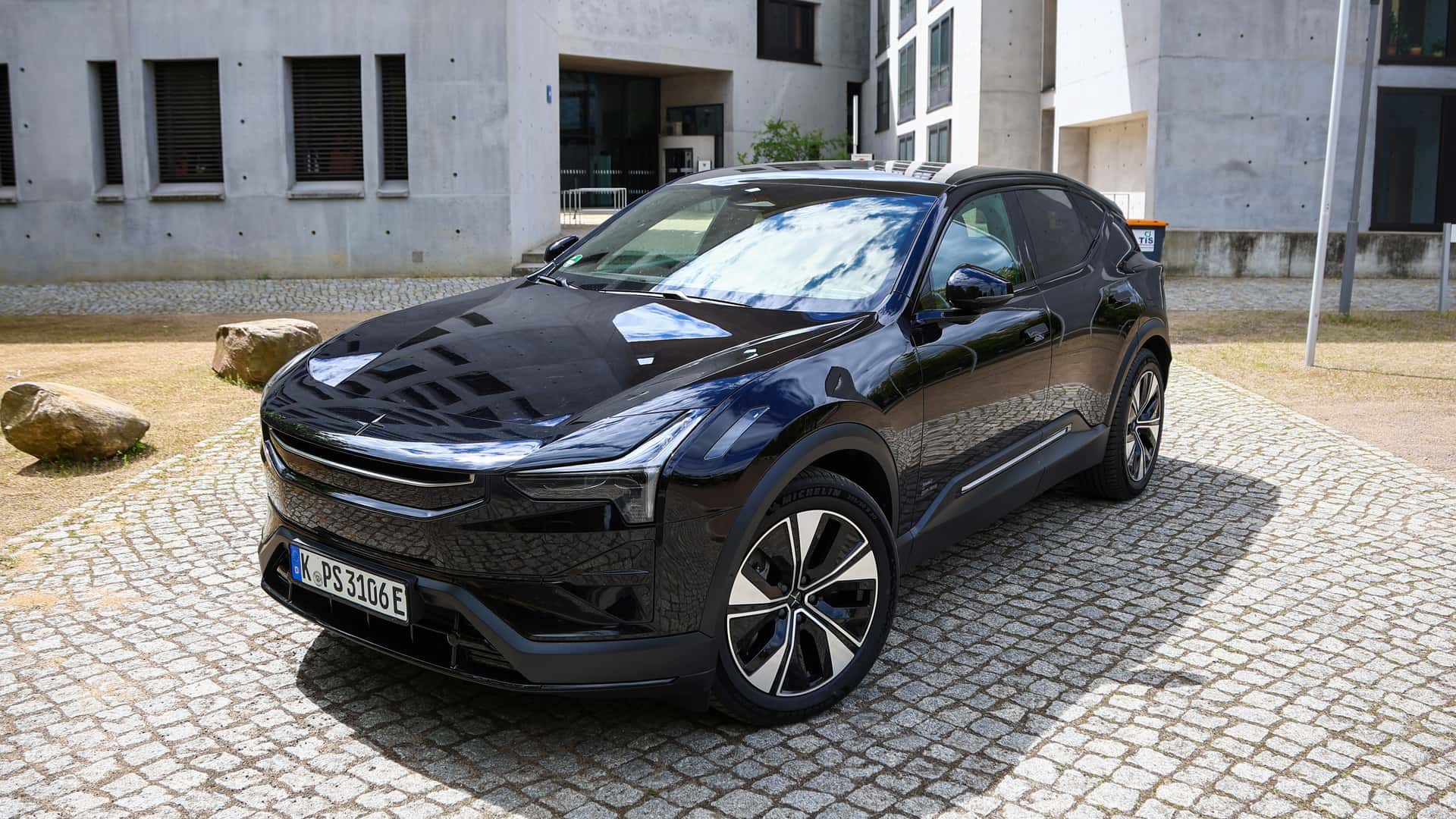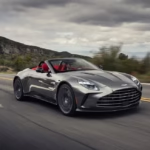The automotive market is currently saturated with premium SUVs, particularly within the rapidly expanding electric vehicle segment. Yet, the Polestar 3 distinguishes itself from merely being “another large electric SUV.”
It aims to showcase an alternative approach, characterized by a clear, minimalistic design language and an unwavering commitment to high-quality materials. Naturally, it also embodies a significant dose of that quintessential Scandinavian design ethos. We rigorously tested Polestar’s first large electric SUV, subjecting it to the demands of daily commutes, extended long-distance journeys, and urban driving. Our comprehensive evaluation revealed numerous strengths, alongside a few areas where improvements could be made.
The Polestar 3 marks a pivotal moment for the young Swedish-Chinese brand, signifying its ambitious entry into the highly competitive large premium electric SUV segment. This model is designed to significantly expand Polestar’s product portfolio beyond the already established Polestar 2, clearly positioning itself as a direct competitor to formidable rivals such as the BMW iX, Audi Q8 e-tron, and Mercedes EQE SUV.
In this challenging arena, Polestar opts for a truly independent design language, seamlessly blending Scandinavian simplicity with cutting-edge technology, all without appearing ostentatious or over-designed.
Developed as an “SUV for the electric age,” the Polestar 3 carries a lofty aspiration: to combine high long-distance comfort, practical everyday range, and a sustainable material and manufacturing concept. Its design is intentionally minimalist, while its underlying technology is decidedly advanced. Standard features include a sophisticated air suspension system, a modern infotainment system powered by Android Automotive OS, and a comprehensive suite of advanced driver-assistance systems.
Furthermore, it is future-proofed with preparations for bidirectional charging (to be activated prospectively via software updates) and the convenience of Over-the-Air (OTA) updates, ensuring the vehicle remains current and gains new functionalities over its lifetime.
Exterior Design: A Distinctive Presence
The Polestar 3 stands out visually in a segment often dominated by similar aesthetics.
Scandinavian Simplicity Meets Aerodynamic Innovation
From an aesthetic perspective, the Polestar 3 offers a refreshing departure in the premium SUV segment. Instead of resorting to an abundance of chrome embellishments or overtly aggressive styling, it presents a design characterized by clean, Scandinavian-inspired lines. The front fascia is both powerful and minimalist simultaneously.
The distinctive split LED headlights, featuring the brand’s characteristic “SmartZone” (which houses various sensors), integrate harmoniously into the overall design. Beyond aesthetics, subtle details like the Aero Wing integrated into the hood and the Aero Blades at the rear are not merely stylish accents; they are functional elements meticulously designed to significantly improve the vehicle’s aerodynamics. This meticulous attention to aerodynamic efficiency results in a remarkable drag coefficient (cW-value) of just 0.29, an exceptional figure for a vehicle of its substantial size. This efficiency directly contributes to improved range and reduced energy consumption.
Dimensions and Road Presence
The Polestar 3’s dimensions underscore its commanding presence on the road. It measures 4,900 mm in length, 2,120 mm in width (including mirrors), 1,614 mm in height, and boasts a substantial wheelbase of 2,985 mm. Despite these considerable dimensions, the Polestar 3 remarkably does not appear clumsy or unwieldy.
Instead, it exudes a sense of imposing solidity and robustness, a quality that genuinely aligns with and reinforces its Swedish heritage and brand image. Furthermore, its design language successfully differentiates it visually from its “half-siblings” within the Volvo lineup, establishing its unique identity within the Geely automotive family.
The inclusion of flush-mounted door handles and frameless mirrors further emphasizes its modern and streamlined aesthetic. In essence, the Polestar 3 often presents itself more like a slightly elevated, sleek sedan rather than a conventional SUV. Its form is far from traditional; it is decidedly progressive, embodying a truly Scandinavian design philosophy that prioritizes clean lines and functional beauty.
In daily driving, the standard 360-degree camera system and comprehensive parking assistance features prove invaluable, significantly aiding in maneuvering this large SUV, particularly in tighter urban environments where its dimensions demand extra attention during parking and low-speed navigation.
Interior: Luxury, Comfort, and Design Choices
The Polestar 3’s cabin sets a high standard for quality, space, and a refined user experience, albeit with minor compromises.
Premium Materials and Unparalleled Comfort
The interior of the Polestar 3 is, quite simply, an impressive achievement, excelling across the board. It feels universally high-quality, impeccably organized, and boasts material finishes that are truly at a premium level. Our test vehicle featured seats upholstered in animal-welfare-certified Nappa leather.
Polestar clarifies that this isn’t a vegan leather, but rather sourced from animals certified to have lived under ethical conditions. These seats provide outstanding comfort, making long journeys remarkably pleasant. Further enhancing the driving experience, the seats include a comprehensive suite of features: heating, ventilation, and massage functions. These amenities significantly boost long-distance comfort, leaving virtually no desire unmet for occupant well-being.
The overall material ambiance is consistently refined, featuring elements like open-pore wood, recycled aluminum, and high-quality upholstery fabrics. These choices not only underscore Polestar’s commitment to sustainability but also contribute to a palpable sense of luxury. The interior exhibits excellent craftsmanship, with precise fit and finish throughout. The noise comfort is particularly impressive: even at higher speeds, the cabin remains remarkably quiet, isolating occupants from road and wind noise, contributing to a serene driving environment.
Audio Excellence and Minor Flaws
Further elevating the in-cabin experience is the optional Bowers & Wilkins sound system. Equipped with 25 speakers and delivering 1,610 watts of power, along with Dolby Atmos capability, this audio system provides a truly excellent sound experience. For many, it will be among the best in-car audio systems encountered, offering rich, immersive, and detailed sound reproduction.
However, a common drawback in many modern luxury vehicles is present here: the pervasive use of black piano lacquer trim. While initially sleek, this material is notoriously prone to fingerprints and smudges, quickly appearing “smudgy” and requiring constant cleaning to maintain its pristine look. This minor aesthetic flaw is a persistent irritation in an otherwise meticulously crafted interior.
Spaciousness and Storage
The Polestar 3 stands out for its generous interior space. The front cabin is undeniably airy and spacious, but the real surprise comes in the rear. Adults of above-average height can sit completely relaxed in the back, with ample legroom and headroom. The ability to comfortably accommodate two individuals measuring 1.90 meters (approximately 6 feet 3 inches) one behind the other is a testament to its thoughtful interior packaging. The main trunk offers 484 liters of cargo space, which includes a convenient 90-liter underfloor compartment. With the rear seats folded down, the total cargo capacity expands to a substantial 1,411 liters.
Adding to the practicality is a useful 32-liter “frunk” (front trunk), ideal for charging cables or smaller items. A minor criticism, however, is that despite the presence of a large panoramic roof, the interior can feel somewhat dark. A brighter interior color option would significantly enhance the cabin’s perceived spaciousness and airiness.
Infotainment and User Interface: Hits and Misses
The vehicle’s operational interface presents a mix of strengths and weaknesses. The central 14.5-inch infotainment display is a definite highlight, impressing with its sharp resolution and excellent responsiveness. Practical shortcuts for climate control and seat functions are intuitively placed on the screen’s lower edge, significantly streamlining daily use.
However, the 9-inch driver display positioned behind the steering wheel is comparatively small and offers limited customization options. This restricts the amount of driver-centric information that can be prominently displayed.
Furthermore, interacting with the on-board computer via the touch system requires a period of acclimatization and can feel somewhat cumbersome. Crucially, key information like energy consumption – a parameter of particular interest to electric vehicle owners – cannot be directly displayed on the driver’s screen, necessitating navigation through the central touchscreen.
This oversight is a minor frustration for EV drivers who prefer to keep an immediate eye on their efficiency. On a positive note, the wireless integration of smartphones via Android Auto and Apple CarPlay is seamlessly implemented, allowing for intuitive access to mobile applications while the phone conveniently charges in a spacious wireless charging tray.
Powertrain and Performance: Smooth Power Delivery
The Polestar 3 delivers robust performance with a focus on refined power and efficient electric propulsion.
Dual Motor All-Wheel Drive Configuration
The Polestar 3 Long Range Dual Motor variant comes standard with a powerful electric powertrain, delivering 360 kW (equivalent to 489 horsepower) and a substantial 840 Nm of torque to the road. For those seeking even greater performance, an optional Performance Package boosts these figures to 380 kW (517 horsepower) and an impressive 910 Nm of torque.
This formidable power allows the SUV to accelerate from 0 to 100 km/h (62 mph) in a brisk 5.0 seconds (or an even quicker 4.7 seconds with the Performance Package). The top speed for both configurations is electronically limited to 210 km/h (130 mph), a sensible limit for an electric SUV.
The driving sensation is one of profound composure and control. Power delivery is remarkably linear, providing robust acceleration without ever feeling abrupt or overly aggressive. In the standard “Normal” driving mode, the throttle response is smooth and measured, ensuring a comfortable ride. Switching to “Sport” mode, however, instantly sharpens the throttle, making it significantly more direct and responsive. The Polestar 3 glides forward with impressive force, yet it always maintains a sense of effortless smoothness, embodying its “Elch” (moose) nickname – powerful but graceful.
Technical Specifications Overview
For a quick reference of the Polestar 3’s key technical details:
| Schnelle Daten | Polestar 3 (2025) |
| Segment | Premium-SUV |
| Länge / Breite / Höhe | 4.900 / 1.936 / 1.614 mm |
| Leergewicht | 2.584–2.670 kg (je nach Ausstattung) |
| Antrieb | Zwei Permanentmagnet-Synchronmotoren (Dual Motor, Allradantrieb) |
| Leistung | 360 kW (489 PS) |
| 0 – 100 km/h | 5,0 Sek |
| Höchstgeschwindigkeit | 210 km/h |
| Preis | ab 89.900 Euro |
Efficient One-Pedal Driving and Battery Performance
The adaptive one-pedal driving system in the Polestar 3 is exceptionally well-executed. It allows for precise modulation of deceleration, making driving both efficient and remarkably comfortable. The system’s calibration is neither overly aggressive nor too lenient, striking a perfect balance that enables relaxed gliding in city traffic and on country roads. This seamless adaptation contributes significantly to a smooth and enjoyable driving experience, maximizing energy recuperation.
The Polestar 3 is equipped with a substantial 111 kWh gross battery capacity (107 kWh net usable). This high-capacity battery comprises 204 prismatic cells, organized into 17 modules, all housed within a robust aluminum casing reinforced with boron steel for enhanced safety. The official WLTP range is up to 610 km (approximately 379 miles) without the Performance Package, dropping slightly to 560 km with it.
In real-world driving conditions, especially when driven without excessive demand on performance, achieving nearly 500 kilometers (around 310 miles) on a single charge is quite feasible.
In terms of energy consumption, the manufacturer states figures between 20.1 and 23.1 kWh per 100 km. Our testing revealed that these figures could often be significantly surpassed in favorable conditions. In city traffic, where frequent recuperation is possible, the Polestar 3 proved remarkably economical, achieving consumption figures of under 19 kWh per 100 km. However, as is typical for all electric vehicles, consumption rises considerably on the highway, especially at higher speeds (130 km/h or more), climbing to over 25 kWh per 100 km.
Charging Capabilities and Future Potential
The Polestar 3’s charging system is highly capable and versatile. For AC charging, it supports up to 11 kW, allowing for a full charge from 0 to 100% in approximately 11 hours from a compatible home charger or public AC station. When it comes to DC fast charging, the Polestar 3 boasts impressive speeds of up to 250 kW.
This enables rapid recharging, with a 10% to 80% charge achievable in approximately 30 minutes. Our real-world experience confirmed this efficiency; a half-hour stop at a supermarket fast charger was enough to get the Polestar nearly fully charged, making e-mobility genuinely enjoyable and practical.
Further enhancing charging efficiency, a heat pump is included as standard equipment, which significantly improves charging performance and range retention in colder temperatures. The vehicle is also prepared for bidirectional charging, a future-proof technology that will eventually allow the Polestar 3 to supply power back to a home grid or other devices. While this feature is currently not activated, its inclusion means it can be enabled via an Over-the-Air (OTA) software update in the future, adding another layer of utility to the vehicle.
Driving Dynamics: Comfort with a Sporty Edge
The Polestar 3 balances serene comfort with responsive handling, making it suitable for various driving conditions.
Adaptive Air Suspension and Ride Comfort
The Polestar 3 is primarily engineered for comfort and exceptional long-distance cruising capability. Its standard adaptive two-chamber air suspension system with active dampers expertly navigates the fine line between a velvety smooth ride and a firmer, more controlled chassis setup. In “Comfort” mode, the suspension effectively filters out road imperfections, allowing the SUV to glide confidently over uneven surfaces. While it offers a supple ride, it deliberately avoids being a mere “sedan-like” soft cruiser.
A discernible sporty undertone remains perpetually present, a characteristic inherent to the brand’s DNA and its commitment to driving engagement. This ensures that even in its most relaxed setting, the Polestar 3 retains a degree of responsiveness and connection to the road.
Agility, Handling, and Braking Feel
Switching to “Dynamic” mode stiffens the suspension further, and the steering becomes noticeably more precise. The torque-vectoring dual-clutch system on the rear axle significantly enhances agility, making the large SUV feel more nimble than its size suggests. This feature is perceptible, yet it cannot defy the fundamental laws of physics when managing a curb weight exceeding 2.6 tons.
While cornering, the Polestar 3 maintains commendable stability, but despite the air suspension, some body movements are still evident during spirited driving. This indicates a balance struck between comfort and a degree of athletic capability, rather than an uncompromised sports car feel.
The steering system itself offers an excellent blend of precision and ease of operation. Its assistance level can be adjusted by the driver, providing sufficient feedback without feeling overly nervous or excessively sporty. However, a notable point of criticism lies in the braking feel. While the deceleration power is undeniably strong, courtesy of the reliable Brembo 4-piston calipers at the front with 400 mm discs, the brake pedal itself feels somewhat “doughy” and lacks sufficient feedback.
This lack of tactile response slightly detracts from the otherwise commanding impression of the vehicle’s powerful drivetrain. As with all electric vehicles, the effortless and playful acceleration can sometimes create a misleading sense of lightness; drivers must always remember that this perceived agility rapidly dissipates when it comes to braking and aggressive cornering. Maintaining awareness of the vehicle’s substantial weight is paramount for safe driving.
Driver Assistance Systems and Usability
The Polestar 3 is equipped with an extensive array of advanced driver-assistance systems (ADAS), which generally perform their functions unobtrusively and effectively. However, the lane-keeping assist system can occasionally be prone to overcorrection. Instead of maintaining a perfectly smooth line, the vehicle can be felt making constant, subtle corrections to stay within the lane boundaries.
While this system can be deactivated, the process is not as straightforward as with some competitors. Disabling it requires navigating through the central infotainment display’s settings menu, an extra step that must be repeated each time the system is to be turned off, which can be a minor inconvenience for drivers who prefer not to use it.
Pricing and Competition: Premium Market Positioning
The Polestar 3 positions itself firmly within the upper echelons of the electric SUV market, competing with established luxury brands.
Pricing Structure
With a starting price of 89,900 Euros for the Long Range Dual Motor variant (including the Pilot and Plus packages as standard), the Polestar 3 is clearly positioned in the premium segment. Our test vehicle, equipped with additional options such as the Performance Package, Nappa leather upholstery, a trailer hitch, privacy glass, and other extras, had an approximate price tag of 103,000 Euros. This pricing reflects its ambition to compete directly with high-end electric SUVs.
Key Competitors
At this price point, the Polestar 3 enters a fiercely competitive arena, directly challenging segment leaders:
- BMW iX xDrive 60 (starting from 99,900 Euros): Known for its futuristic design, strong performance, and intuitive iDrive infotainment system.
- Mercedes EQE 500 SUV (starting from 99,841 Euros): Offers a luxurious cabin, sophisticated MBUX infotainment, and a comfortable, refined ride typical of Mercedes-Benz.
- Nio EL7 (starting from 85,900 Euros): A strong challenger from China, known for its innovative battery swap technology, spacious interior, and advanced autonomous driving features.
Strengths and Trade-offs
The Polestar 3’s primary strengths lie in its distinctive and coherent design, its commitment to sustainable materials, and its high level of driving comfort, especially over long distances. It appeals to buyers looking for a vehicle that stands apart from the more conventional luxury offerings.
Conversely, some of its rivals may score higher in specific areas, such as outright driving dynamics (e.g., BMW iX), the sheer variety and seamless integration of driver assistance systems (e.g., Mercedes EQE SUV), or particular aspects of user interface logic and intuitive controls (e.g., Nio EL7’s comprehensive digital assistant). These distinctions highlight that while the Polestar 3 excels in its chosen niche, prospective buyers will weigh its unique attributes against the refined strengths of its established competitors.
Thoughtful and Stylish Contender
The Polestar 3 makes a strong and convincing debut in the premium electric SUV segment. It presents itself as a vehicle that is distinctive, meticulously crafted with high-quality materials, and fundamentally designed with sustainability in mind. It truly shines with its exceptional comfort, robust and smooth electric powertrain, and strikingly modern design.
While our comprehensive evaluation uncovered a few minor points of criticism, such as the somewhat “doughy” brake pedal feel, the relatively small driver display, and occasional nested menu logic within the infotainment system, these issues only marginally diminish the overwhelmingly positive overall impression. These are minor imperfections that do not overshadow the vehicle’s core strengths and its overarching appeal.
For consumers actively seeking a large, stylish electric SUV that purposefully deviates from mainstream aesthetics, and one that seamlessly combines cutting-edge technology, unparalleled comfort, and a strong commitment to sustainability, the Polestar 3 emerges as a genuinely compelling alternative. It is not merely a showy concept car or a superficial attempt to enter the premium market; rather, it is a meticulously thought-out and cohesive overall package.
The Polestar 3 truly embodies the spirit of a “real moose” – powerful, elegant, and uniquely Scandinavian – ready to carve its own path in the rapidly evolving world of electric luxury vehicles.








